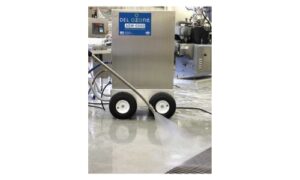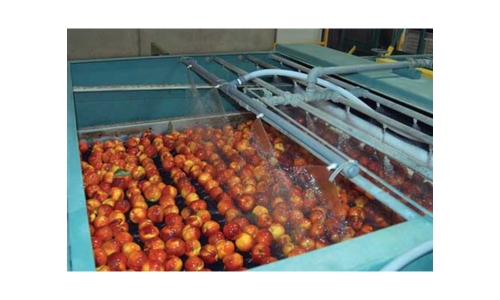INTRODUCTION
- Scientists have recently concentrated on developing non-thermal and unconventional thermal approaches to eradicate the adverse impacts of pesticides in food.
- Green technology is becoming more popular, and technologies like ozone (O3) have garnered attention, for the demand for pesticide-free, organic, and high-quality foods is increasing. This is because ozone (O3) has strong antibacterial and disinfection properties. In France, it was first used commercially to treat potable water. Ozone water treatment has become popular since.
- It was recognised as a novel emerging non-thermal technology for degrading pesticide residues from fresh produce in the food processing industries.
- Ozone in food industry is frequently used to achieve pesticide breakdown and offers several benefits compared to other traditional chemical methods. Since it works in both gaseous and aqueous states, it is an economic and commercial method used in the food industry.
- Ozone has been used frequently to degrade pesticides and has many advantages over conventional chemical methods.
- Researchers have been zeroing in on improving non-thermal and non-traditional thermal strategies to dispose of the unwanted impacts of pesticides in food [1].

Figure 1– Aqueous and Gaseous ozone can be used in the food industry [2]
Principle
- Ozone’s unstable third oxygen atom can oxidise organic and inorganic molecules by combining with them.
- Ozone treatment, in contrast to other conventional methods, leaves little trace in food, so ozone-treated food is safe for consumption. It is claimed to be GRAS-certified for use in the treatment of bottled water. Finally, after being used, ozone changes into oxygen. Therefore, ozone treatment is considered as sustainable.
- An industrial expert panel declared it safe for human consumption in food processing in 1997, and the FDA and USDA declared it a food additive in 2000 [3].
Advantages
- Ozone requires only air for production.
- It kills bacteria faster and more effectively than chlorine.
- Ozone is a non-thermal method of controlling microbes and pathogens.
- It is a non-chemical alternative for sanitising food-contact surfaces and treating water.
- Ozone treatment is more economical since water does not need to be heated.
- It is compatible with the processing of organic food.
- It can be produced on-site, eliminating the need for storage, and it does not leave any traces in water or food.
Disadvantages
- Rubber and other polymers used to make gaskets and O-rings could be damaged.
- It cannot be stored or moved because its active life in water is shorter than 30 minutes.
- Ozone is an irritant. It can irritate the throat and cause asthma.
- It will oxidise every organic substance in the room.
- The soil load may limit its capacity to eradicate microorganisms. Therefore, when disinfecting water, the water should be pre-filtered before ozonation[4].
Applications of ozone in food processing :
- Ozone can be directly sprayed on various foods to improve safety and extend shelf life. Ozone is used to treat foods in gaseous form and aqueous sprays and dips. One of the most promising applications of ozone is the sanitation of fresh produce.
- Ozone is also utilised in the preparation of seafood, where it has been proven to improve the safety of the seafood and extend its shelf life.
- The use of ozone-containing water in clean-in-place (CIP) cycles allows food processors to sanitise manufacturing facility surfaces more efficiently and effectively.
- Ozone can also be used to manage fungus and mycotoxins in stored grains and other foods and for pest control as an alternative to chemical treatment [2].

Figure 2: Ozone can be sprayed on fresh produce for sanitation[2].





